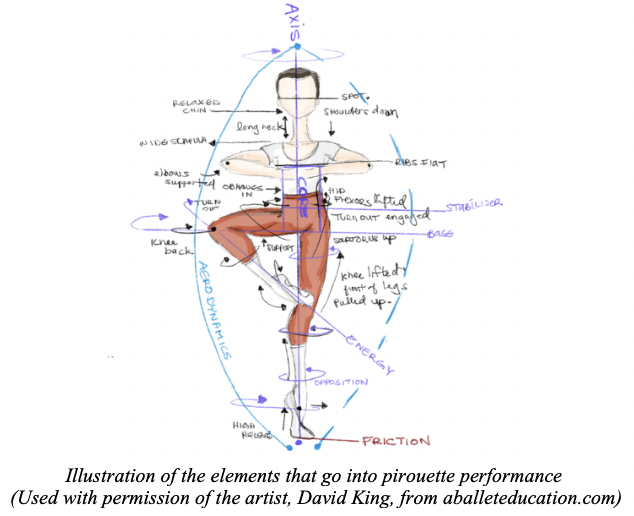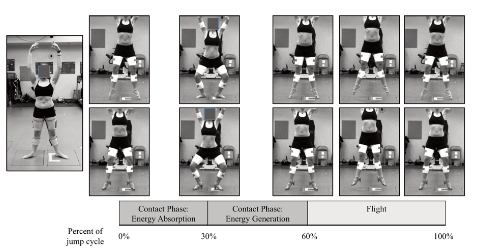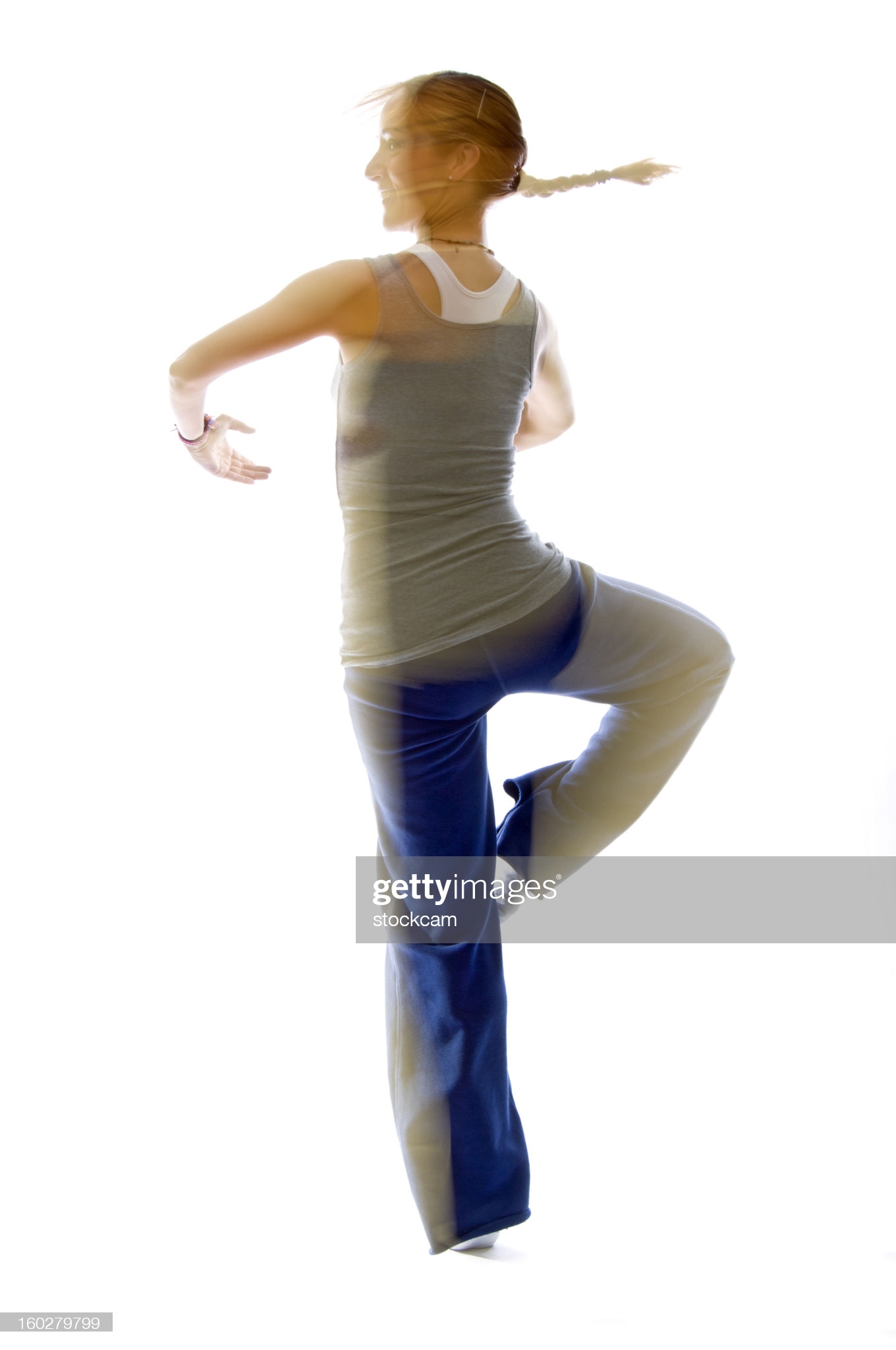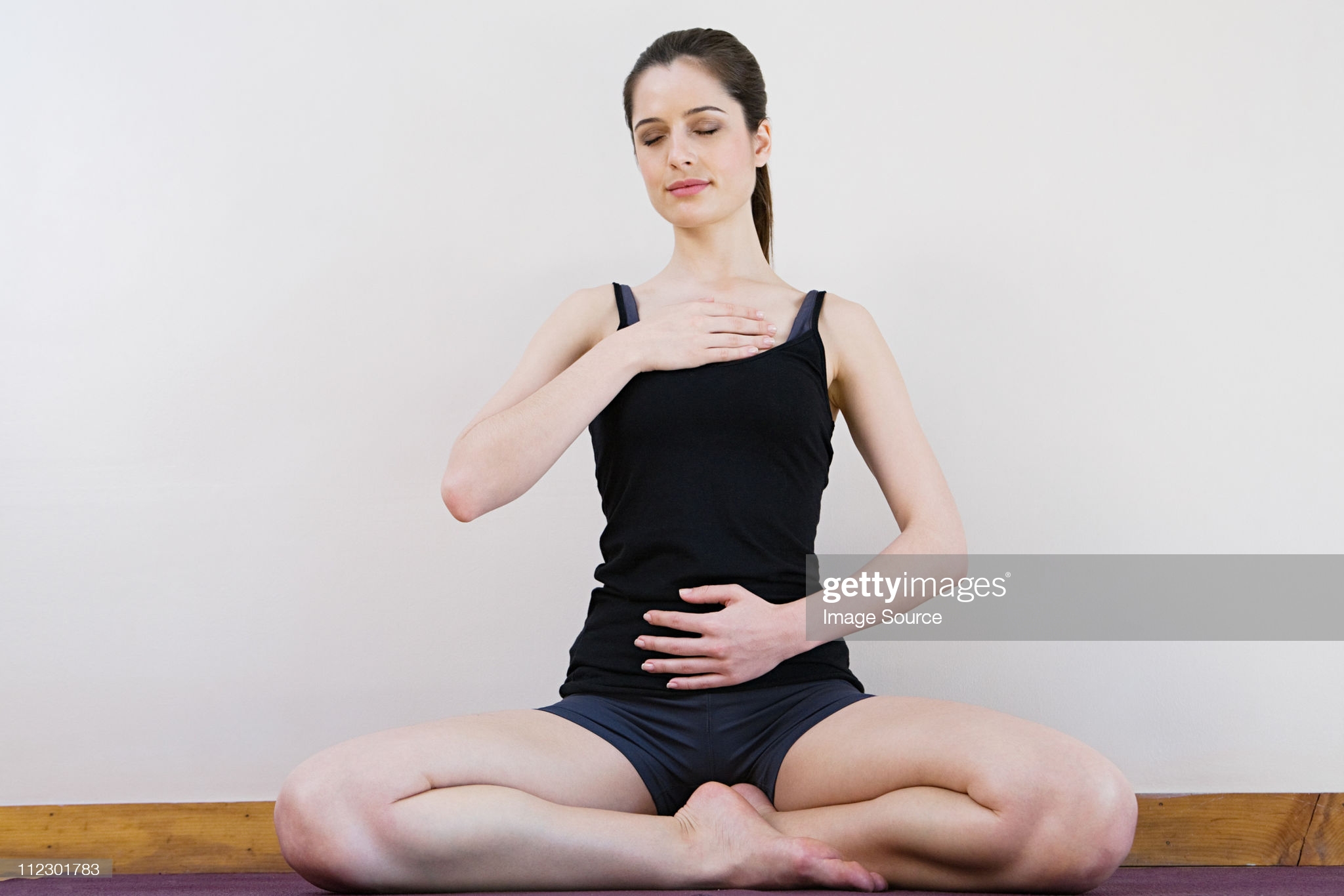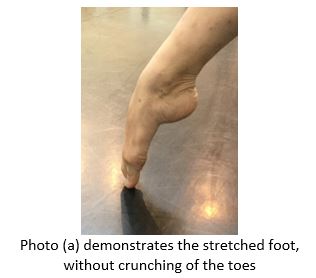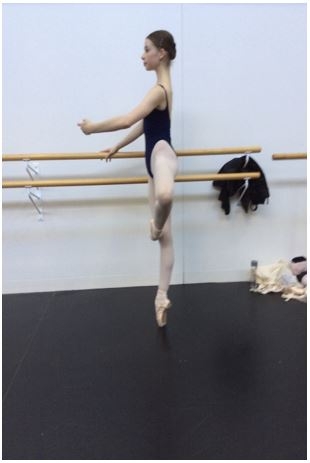Blog
Heels Down During Jumps…Technique or Physics?
Author: Samantha Panos on behalf of the IADMS Dance Educators' Committee
As dancers, we have all been told at one point to put our heels down when we land our jumps. As teachers, we may feel like we are constantly nagging our students to put their heels down. But why is preparing and landing from jumps with heels down important? Is it just good technique or does it play a larger role in performance capacity?
Read ArticleMeasuring a Pirouette: Tackling the challenge of quantifying dance
Author: Catherine Haber on behalf of the IADMS Dance Educators’ Committee
Pirouettes are incredibly challenging for dancers to perform, but also for scientists to study! As we heard from January’s post, physical principles – such as torque, force couples, angular acceleration, and conservation of angular momentum – can help us gain better insights into performance. However, beyond these principles, there are a multitude of crucial elements that go into the performance of a pirouette.
Read ArticleDoes dancing in heels hurt your knees? This may be why.
Author: Pamela Mikkelsen on behalf of the IADMS Promotion Committee
Dancers know that the shoes we wear impact how our bodies feel after dancing. I know that dancing full production shows in heels left my knees sore in ways that wearing flat shoes didn’t. Some of this soreness can be explained by differences in choreography demands but how much of the soreness could come down to the shoes?
Read ArticleCan Physics improve your pirouettes?
Authors: Margaret Wilson and Jennifer Deckert on behalf of the IADMS Dance Educators' Committee
Successful completion of a pirouette (turn on one leg) can sometimes feel like an impossible task, but understanding more about the mechanics behind the turn may help you find more stability, produce more rotations and have better balance. There are several principles from physics that are useful in understanding the preparation and turning action in a pirouette.
Read ArticleBreath: A Back-To-School Basic
Author: Jennifer Deckert on behalf of the IADMS Dance Educators' Committee
.. During this time of re-acclimation, particularly at Wyoming altitude, I often spend several classes re-connecting to the breath in order to provide a much needed ‘reset’ and reminder of the role of breathing in our dance practice. Breath is the only controllable aspect of our autonomic nervous system which includes the sympathetic or “fight or flight” and the parasympathetic or “rest-and-digest”. Breath awareness provides the ability to move between these two states in a balanced and effective manner, allowing the dancer to be powerful and relaxed, strong and steady, connected and focused.
Read Article5 Research Insights on Technique Proficiency for Busy Dance Teachers
Author: Clara Fischer Gam
Dance teaching is a daily challenge. Being in the studio for long working hours, preparing different classes for the term and dealing with the individualities within a group of students are some of the struggles and joys of the teaching practice. As we work against the clock with dancers to keep up with the timetable and achieve aesthetic quality and mastery of technique, the time for reflecting upon experience and investigating new pathways for student learning becomes scarce.
Read ArticleIntroducing the knee: Anatomy and biomechanics
Authors: Elsa Urmston and Jonathan George on behalf of the IADMS Education Committee
As dancers, educators and clinicians, we know that knees cope with a lot! Over the last decade or so, the demands placed on the dancer’s body has increased exponentially and ever more complexly. Acrobatic movement is becoming evident and the effect to the joints of the limbs can often mean greater incidence of injury. As Liane Simmel points out “pirouettes on the knees, knee drops, and even a plié in fourth position require particular leg stability and optimal mobility in the knee.”1 In reviewing the literature, Russell2 identifies the lower extremity to repeatedly be the most commonly injured region of the body amongst dancers.
Read ArticleSnapping Hip Syndrome
Author: Janine Bryant on behalf of the IADMS Education Committee
Do your dancers ever say, ‘My hip snaps or pops when I do grand battement or developpe´ devant or a´ la seconde’? The snap sometimes presents with pain but sometimes not, and happens either on the up phase or down phase of the movement. Dancers might also notice decreased range of motion through multiple planes of movement.
Read ArticleStretching the Point: Part 1
Author: Maggie Lorraine on behalf of the IADMS Education Committee
Learning how to bend the knees and point the feet may be the first movements that dance students learn. It is sobering to consider that both of these movements are potentially harmful if not executed correctly and practiced in perfect alignment. Experienced teachers of children and young people often notice that by encouraging students to “stretch” their feet rather than “point”, they are less likely to crunch their toes. Crunching results in a “shortened” line of the foot. On the other hand, “stretching” encourages the students to lengthen the leg through to the ankle and arch of the foot. Anatomically speaking we are talking here about plantarflexion of the ankle of course, although this actual term is seldom used in a teaching context.
Read ArticleMaintaining Correct Alignment When Training Positions Retiré or Passé - (to withdraw or to pass)
Author: Maggie Lorraine on behalf of the IADMS Education Committee
In the last post from the IADMS Education Committee “Dancing with the pelvis” the authors focused on pelvic alignment and its relevance to movement execution in the studio. When reading this post on the retiré position, it would be useful to refer back to information posted on previous IADMS posts, as each new post now reinforces the anatomical truths that guide us as teachers. To quote Clara Fischer and Elsa Urmston,“We have all learned from experience: proper alignment is one of the basic building blocks for achieving the aesthetic line and form required for dance technique.”
Read Article- IADMS 34th Annual Conference - Experience Point of View: Jennifer Milner
- IADMS 34th Annual Conference - Experience Point of View: Joanna Nicholas
- IADMS 34th Annual Conference - Experience Point of View: Erika Mayall
- Beginning ASL for Medical Students & Health Practitioners
- Relative Energy Deficiency in Dance

